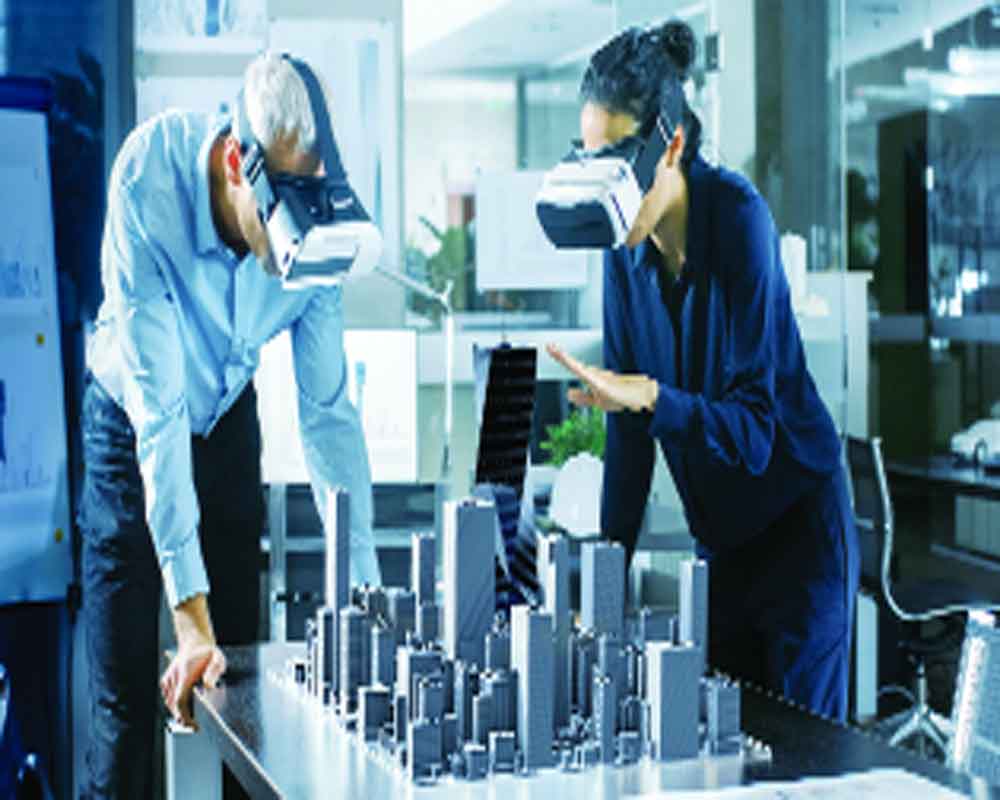Gautam Tewari expounds a resultant paradigm shift in architecture pedagogy through immersive technology
Technology has been aiding the growth of different industries in diverse shapes and forms. In the ongoing pandemic, technology has acted as a catalyst for reinforcing work patterns. Though fairly slow, the adoption of technology in the AEC (architecture, engineering and construction) industry is not novel, however, the same cannot be stated about design education. Over the years, design education has shied away from the adaptation and application of technology. Nevertheless, the current pandemic has not just compelled educational institutes to adopt technology but also created an environment that fosters its growth. As design institutes catch up with the strides made in technology, virtual reality offers a robust, future-ready plug-in for design education that, in turn, enables a skill-intensive curriculum for universities and students to be better prepared for a digitally secure career.
Immersive technology offers great potential to bridge this gap by enhancing the understanding of design and allowing students to virtually experience their creations. It not only allows for real-time and true-to-scale modifications and iterations but also offers relief from tedious back and forth design processes. This enables students to explore the realm of design freely. Various collaborative solutions also allow the opportunity for students to be guided by faculty through these explorations or even collaborate among themselves for group assignments.
Even though the current curriculum creates profound thinkers and designers, students often find themselves challenged when confronted with technology in the professional realm. Young designers struggle with finding the right tools to communicate design to their clients or superiors resulting in stunted career growth. Adaptation of technologies like virtual reality into the curriculum is a step towards bridging this gap. It not only creates a better understanding of immersive technology but also encourages students to analyse its significance in professional practise. The lack of access to construction sites and practising experts hold students back from generating a comprehensive understanding of building products and technologies available in the industry. Using digital twins created by building product manufacturers on various virtual reality platforms is a great way for students to keep up with the new industry trends, as well as enhance their cognisance of available building products.
Immersive technology platforms have a myriad of tools to offer that would allow students to get a comprehensive and hands-on experience of design through easy and informed modifications and discussions with design mentors. Current methods leave students and mentors handicapped by not allowing the exploration of products as well as design options in real-time. Hence, the use of technology creates a transparent process of discussion, to create a better feedback mechanism for improved and efficient design understanding.
Through the application of virtual reality, design understanding can be revolutionised by moving from static methods of design presentation such as 2D drawings and 3D imagery to a more dynamic interactive experience that is true to scale and proportion. Further, by connecting the design fraternity with building product manufacturers, immersive technology provides the requisite tools and platforms to not only bolster design communication within the academic realm but also extend learning opportunities beyond academic circles, thereby allowing students to familiarise themselves with the latest building products, industry trends. A technologically backed curriculum, therefore, becomes the ideal plug-in for a robust education system that would prepare students for the professional world in a better manner, by increasing their skill-set and subsequent employability — all this through a digital-first career.
Design education has been faced with various challenges like the lack of comprehensive design learning and technology-driven curriculums. The exhausted systems and curriculums are often obsolete and have lost their relevance resulting in low employability and under-skilled workforces. Immersive and collaborative technology like virtual reality can bring accuracy in functioning and communication amongst students and faculties, offering a comprehensive technological solution that ensures efficiency in communication and learning. The pandemic not only offers an opportunity to rethink and redefine our educational methodologies but also allows us to reinvent them by incorporating technology as we transition back to remote learning. Immersive technology creates a future-ready and digitally skilled workforce that will revolutionise the design industry in the coming future.
(The author is the co-creator of Trezi, a fully immersive virtual reality product that transforms design communication & collaboration in the building industry.)


























